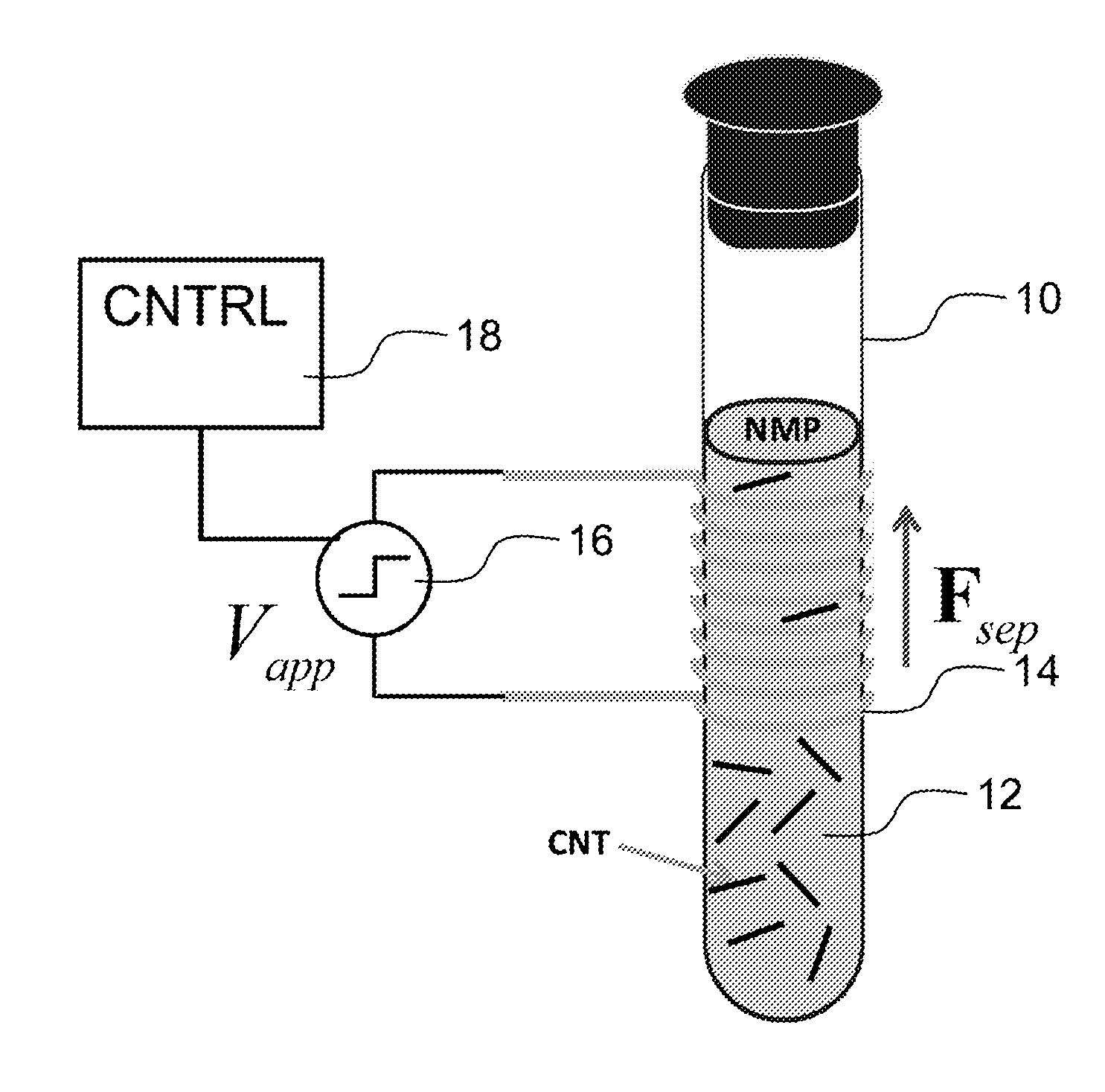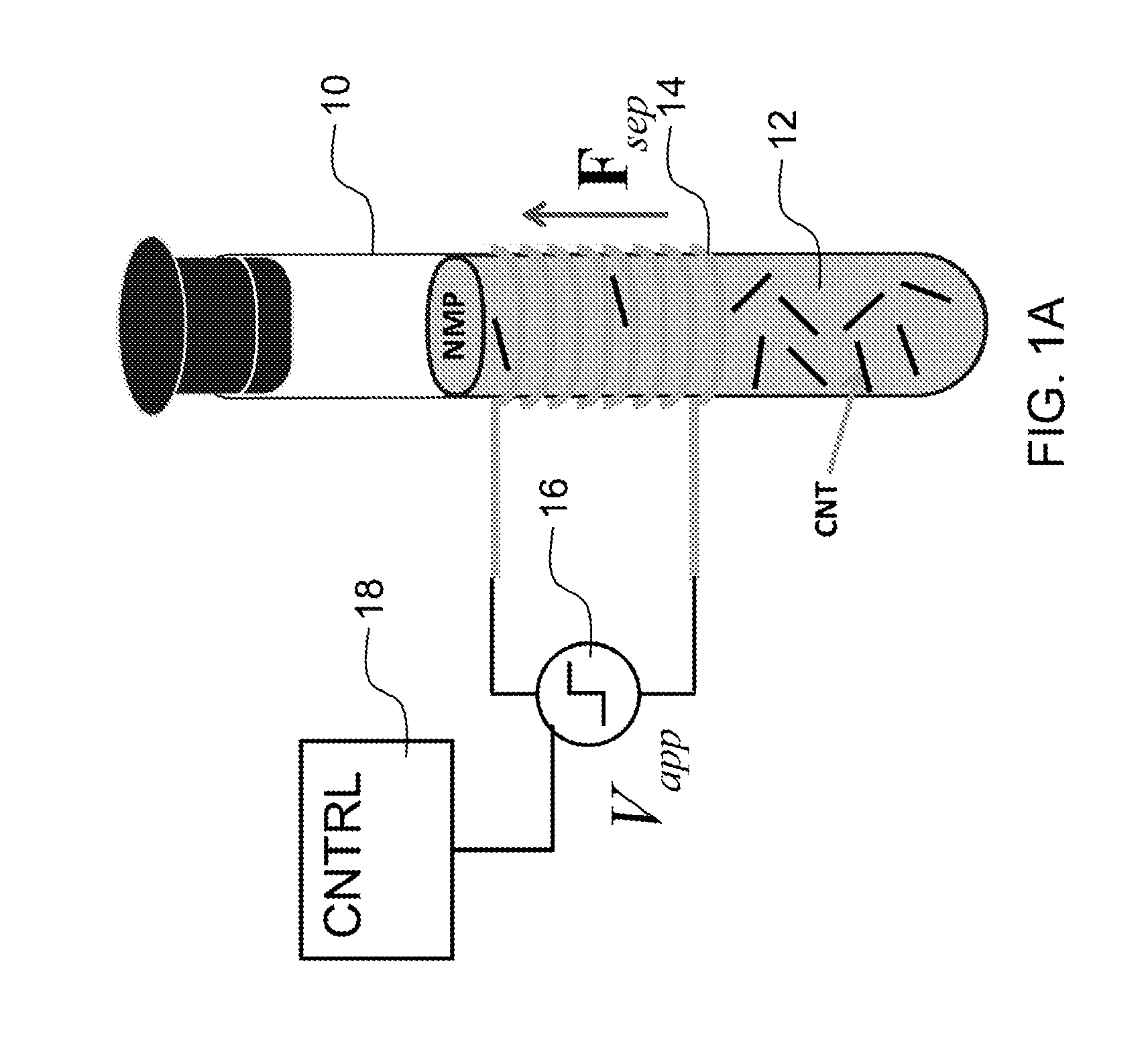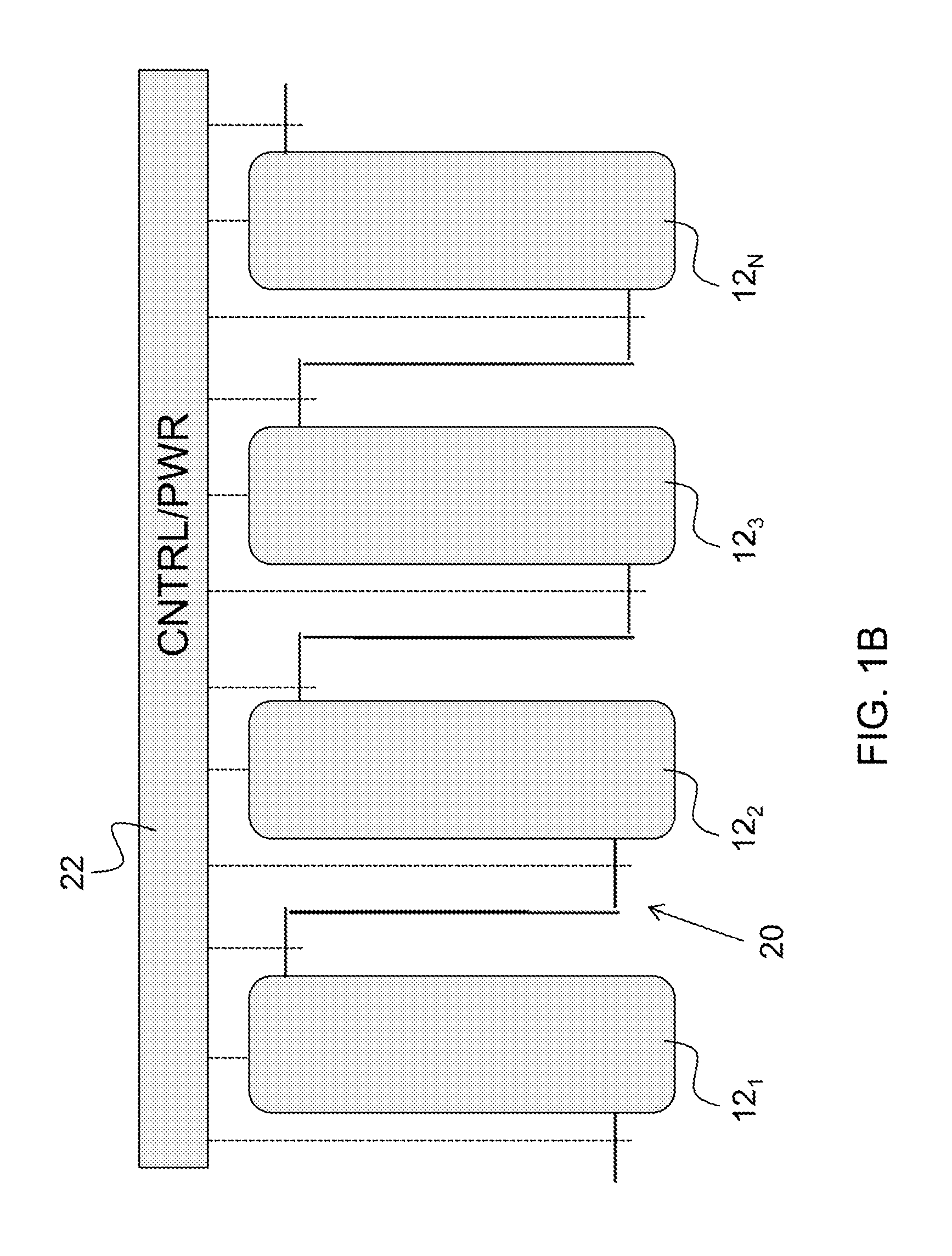Asymmetric magnetic field nanostructure separation method, device and system
a magnetic field and nanostructure technology, applied in the field of nanostructure separation, can solve the problems of limiting the possible number of cnt applications, density gradient separation tends to destroy longer cnts in its processing, and no known process to synthesize chirally pure carbon nanotubes, etc., to achieve high ratio of metallic, conductive or charged nanostructures, and high ratio of semiconducting or insulating nanostructures
- Summary
- Abstract
- Description
- Claims
- Application Information
AI Technical Summary
Benefits of technology
Problems solved by technology
Method used
Image
Examples
Embodiment Construction
[0017]The present inventors have recognized that it is better to maintain the nanostructures in solution during the process of separation and have provided a method for accomplishing the same that is efficient, scalable and inexpensive. Such solution based separation makes the processes of the invention simpler and amendable to many industrial processes. Process of the invention also work with or without surfactants. Methods of the invention are applicable to nanostructures that can be provided in solution and include a distribution of metallic, semiconducting and insulating nanostructures or a distribution of semiconductor nanostructures of different sizes. Example nanostructures that can be separated by the invention include CNTs, graphene nanoribbons, semiconducting nanowires, and semiconducting quantum dots. Previous CNT electronic separation techniques known to the inventors are limited in their throughput and ability to preserve CNT length. Methods, devices and systems of the ...
PUM
| Property | Measurement | Unit |
|---|---|---|
| diameters | aaaaa | aaaaa |
| diameters | aaaaa | aaaaa |
| Lorentz force | aaaaa | aaaaa |
Abstract
Description
Claims
Application Information
 Login to View More
Login to View More - R&D
- Intellectual Property
- Life Sciences
- Materials
- Tech Scout
- Unparalleled Data Quality
- Higher Quality Content
- 60% Fewer Hallucinations
Browse by: Latest US Patents, China's latest patents, Technical Efficacy Thesaurus, Application Domain, Technology Topic, Popular Technical Reports.
© 2025 PatSnap. All rights reserved.Legal|Privacy policy|Modern Slavery Act Transparency Statement|Sitemap|About US| Contact US: help@patsnap.com



